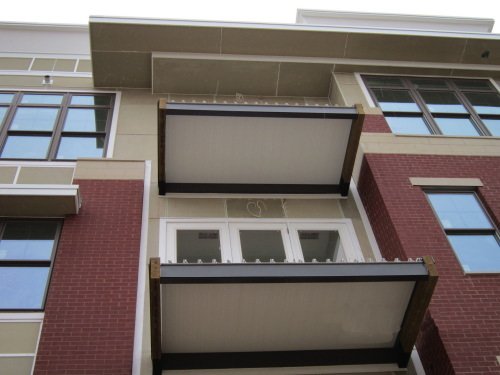Watertight profile: the ideal solution for building WATERPROOF BALCONIES
METADECK avoids the creation of thermal bridges in accordance with the RT 2012 (2012 Thermal Regulations), the technology of choice for HQE and BBC projects.
The 2012 Thermal Regulations (RT 2012) require particular attention to be paid to thermal bridges when creating balconies in collective housing. However, traditional masonry balcony construction techniques make it difficult to break thermal bridges.
Wood-steel framework to which Meta-Deck profiles are fixed
Example of a damaged balcony: the reinforcement has swollen and burst the concrete


Traditional masonry balconies suffer from a number of handicaps:
> Maintenance and durability: They deteriorate with time and frost, creating water infiltration and associated damage. The cost to owners of maintaining these balconies is high.
> Waterproofing: A costly and fragile waterproofing system must be installed
> The surface of the balcony is often covered with concrete slabs or tiles, which are out of fashion, dirty, slippery and sensitive to frost, while the underside and edges, which are usually painted, get dirty quickly and need to be repainted regularly.
Balconies must be uncoupled and fixed to the façade by cables, brackets or supported by posts.
In the example opposite, which is rather well conceived and executed, we see balconies on a new building that are attached to the façade by cables.
> The balcony is made up of a steel structure with a steel decking The surface of the balcony was then simply tiled.
> Installing decking boards would have been complicated and unreliable using the steel decking technique.

METADECK is a good alternative to steel decking for this type of application, making it possible to create a wood deck (or wood composite) on balconies. This solution is very popular with customers, as it is easy to install, warm and durable.


Finishing detail of the framework of the uncoupled balcony
Balconies stacked on top of each other and separated from each other are watertight


View of Meta-Deck profiles in progress
Final view of wood decking on Meta-Deck framework
